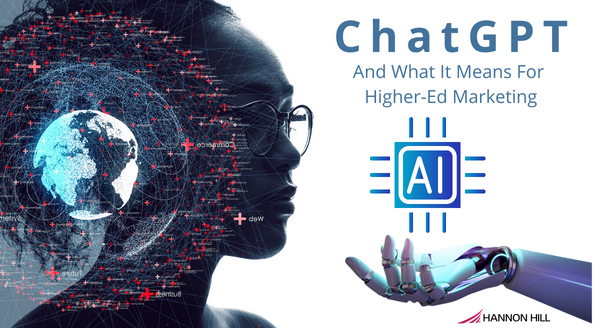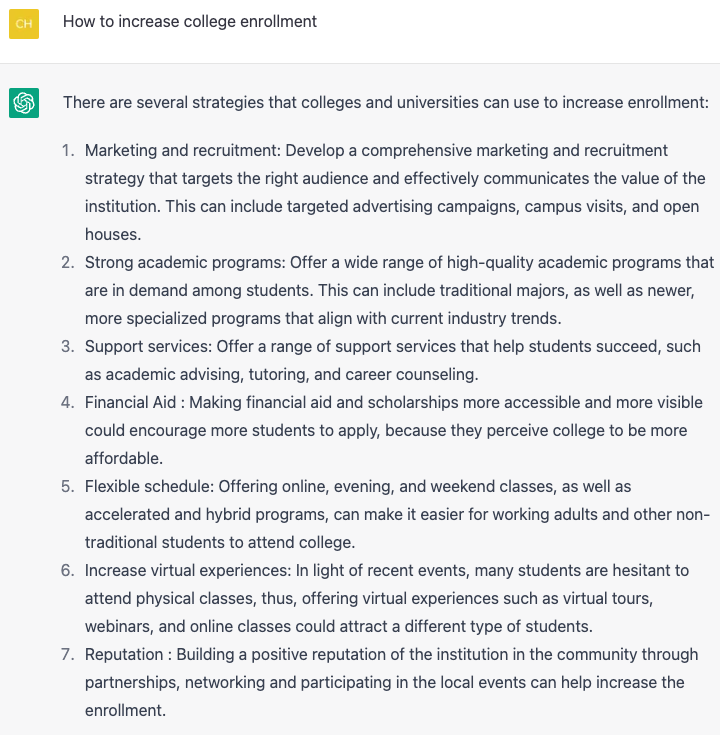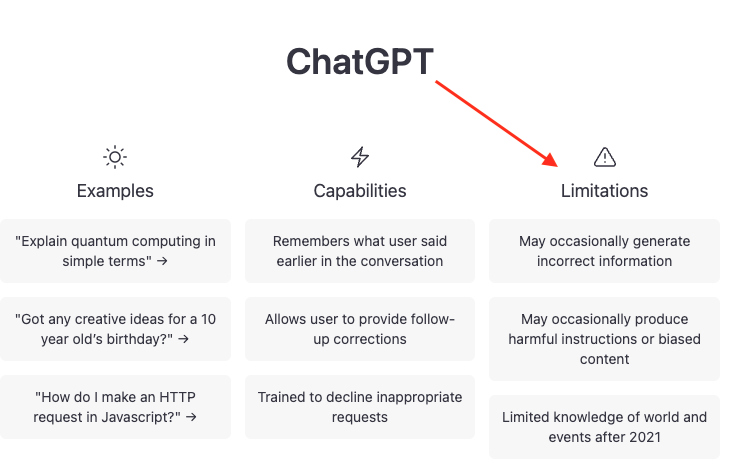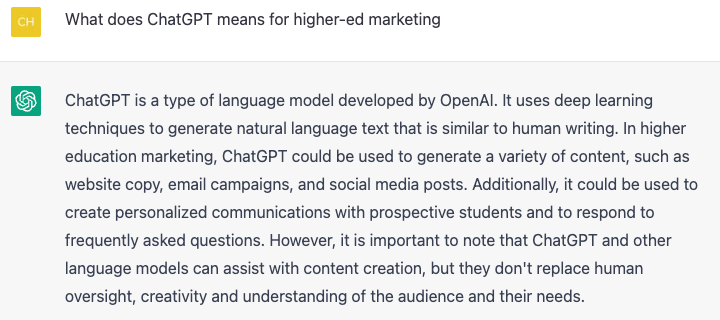
In November 2022, OpenAI, an artificial intelligence (AI) development company based out of San Francisco, released ChatGPT, a language generation model. It is based on the GPT (Generative Pre-trained Transformer) architecture and fine-tuned for conversational response generation. ChatGPT is trained on a large dataset of informal exchanges and can be modified for various tasks, such as question answering, dialogue generation, and chatbot development.
ChatGPT generates its answers based on the patterns and relationships learned from the large dataset of text data on the internet. It does not have access to external information or rely on any knowledge or understanding of the world as a human does.
It generates text based on the probability distribution learned from the data it's trained on. The model predicts the next token in a sequence given the previous tokens. It does this by using a technique called maximum likelihood estimation.
Once it's deployed, it generates responses based on patterns it has learned from the training data and on the input it receives when it's being used.
Below is a snipped of ChatGPT's response on "how to increase college enrollment:

ChatGPT produced quite an extensive list of various strategies created within seconds.
It's important to note that the responses generated by ChatGPT may not always be accurate or complete because it doesn't understand the context, meaning, or world knowledge. Therefore, it’s vital to proofread everything ChatGPT generates before publishing or distributing its content.
ChatGPT, like any other language generation model, has a set of advantages and disadvantages. Here are some pros and cons of using ChatGPT:
Pros:
Cons:
GPT-based models are not perfect. But with proper fine-tuning and evaluation, it has the potential to be a very powerful tool for different natural languages processing tasks, such as assisting with blog posts, articles, and website or social media content.
The following snapshot lists ChatGPT's limitations on the far right:

Higher-ed marketing departments can use ChatGPT in different ways to improve their operations and reach prospective students, alumni or donors more effectively.
Some potential use cases include:
But let’s ask the bot what it thinks what ChatGPT means for higher-ed marketing:

At the time of this writing, there are mixed reviews about the effectiveness of ChatGPT. Tina McCorkindale, Ph.D, APR, President and CEO of the Institute for Public Relations, a nonprofit foundation dedicated to fostering greater use of research and research-based knowledge in public relations and corporate communication practice, said that:
"The program is like a poorly trained undergraduate student who doesn't cite their sources."
However, higher ed marketing departments, especially those trying to accomplish their goals in spite of limited staff, should consider utilizing ChatGPT to help with the initial drafts. Once a draft is created by the bot, subject matter experts should review, edit and add citations when applicable.
The future is AI, and anything new can be scary. Content creators may fear that their jobs will be eliminated, similar to the rise of the internal-combustion engine 100 years ago that destroyed the then personal transport industry – that around the horse and carriage. Lots of jobs were lost, and the carriage and draft horse industry tanked, but a new frontier emerged, creating new, exciting possibilities.
As with all things in life:
“We can’t change the direction of the wind, but we can adjust our sails to always reach our destination.” Jimmy Dean
Last Updated: Jan 17, 2023 11:00 AM